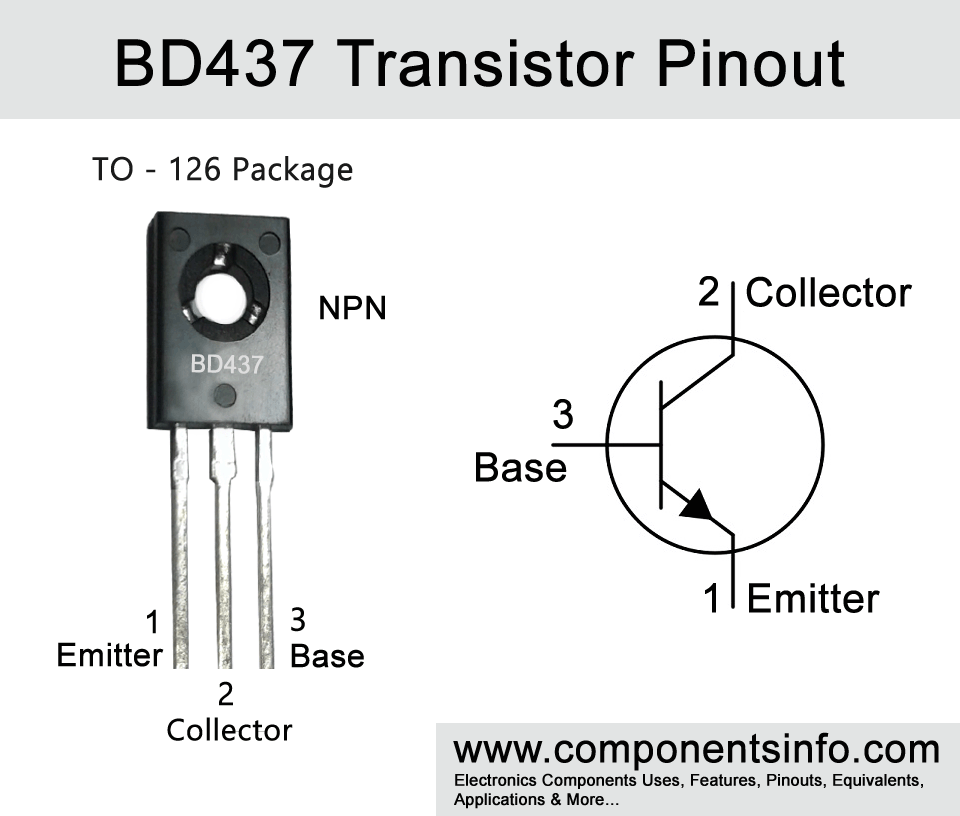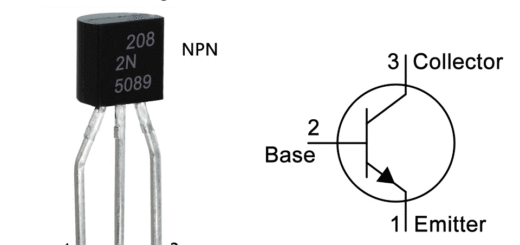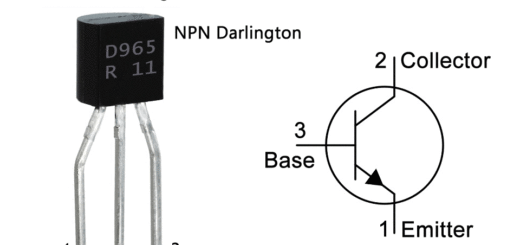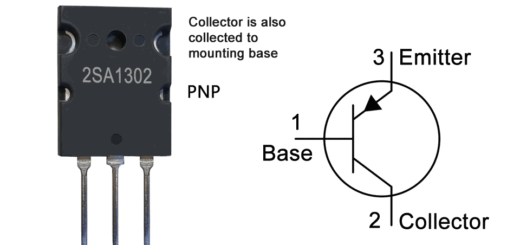BD437 Transistor Pinout, Equivalent, Applications, Features and More
BD437 is an NPN transistor designed to be used in switching and amplifier applications. This post explains BD437 transistor pinout, equivalent, applications, features and other details about this device.
Absolute Maximum Ratings:
- Package Type: TO-126
- Transistor Type: NPN
- Max Collector Current(IC): 4A
- Max Collector-Emitter Voltage (VCEO): 45V
- Max Collector-Base Voltage (VCBO): 45V
- Max Emitter-Base Voltage (VEBO): 5V
- Max Collector Power Dissipation (PC): 36W
- Max Transition Frequency (fT): 3 MHz
- Minimum & Maximum DC Current Gain (hFE): 30 – 130
- Max Storage & Operating temperature Should Be: -65 to +150 Centigrade
PNP Complementary:
The PNP complimentary of BD437 is BD438
Replacement and Equivalent:
BC437G, 2N4923, 2SC2571, 2SC2823, 2SD1488, 2SD1486, MJE225
BD682 Transistor Explained / Description:
If you are looking for an NPN transistor that can drive a load of upto 4A with the load voltage of up to 45V then the BD437 transistor can be a good choice. The transistor is available in TO-126 package, it is a medium power transistor designed to be used for switching and amplifier applications.
The absolute maximum ratings of the transistor are collector-emitter voltage of up to 45V, collector-base voltage of 45V, continuous collector current is 4A, max emitter-base voltage is 5.0V, max base current is 1.0A and maximum power dissipation is 36W.
Some electrical characteristics of the are DC current gain of 30 to 130, collector saturation voltage is 0.8V, collector cutoff current is 0.1mAdc and transition frequency is 3.0MHz.
By looking at the characteristics of this transistor it is concluded that this is a good transistor to use in all your general purpose switching and amplifier applications.
Where We Can Use it & How to Use:
You can use BD437 for wide variety of purposes it can be used in chargers, supplies, driver and control circuits, solar applications and many more applications. The detailed list of its applications can be found under the applications heading below.
To use the transistor first of all check its pin configurations. Now if you want to use it as a switch then connect its emitter with the negative supply of the circuit, its base with the signal source through which you want control the load (A suitable resistor must be used between signal source and the transistor’s Base) and its collector with the negative supply of the load and the load’s positive supply will be connected with the positive supply of the circuit.
When using as an amplifier first understand your circuit requirements and use passive components to get the required gain.
Applications:
Motor Drivers
Switching Circuits
Inverter Circuits
Temperature Control Circuits
Audio Amplifiers
LED Drivers
Relay drivers circuits
Solar Circuits
Relay Driver Circuits
Battery Chargers
PWM controllers
Variety of General Purpose Applications
Safe Operating Guidelines:
Here are the safe operating guidelines of the transistor.
- Do not use the transistor to its absolute max ratings and always stay 20% below from its max ratings.
- The maximum collector current is 4A therefore do not drive load of more than 3.2A.
- The max collector to emitter voltage is 45V therefore the derived load should be under 36V.
- The temperature around the transistor should be between -55°C to 150°C.
Datasheet:
To download the datasheet just copy and paste the below link in your browser.
https://datasheetspdf.com/pdf-down/B/D/4/BD437_FairchildSemiconductor.pdf



